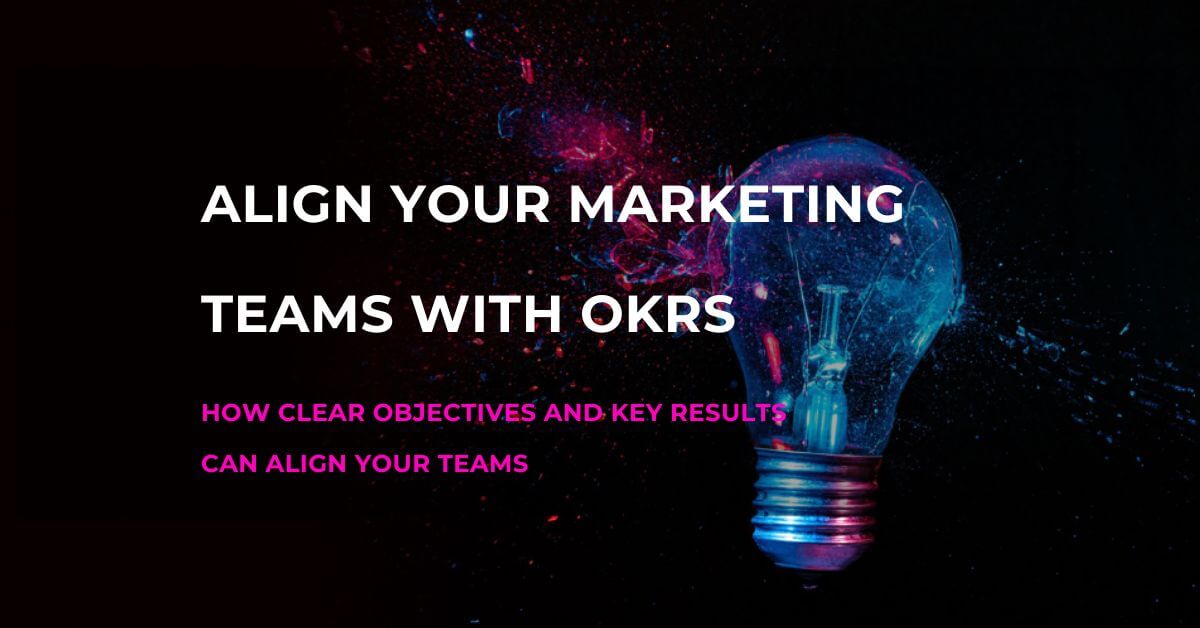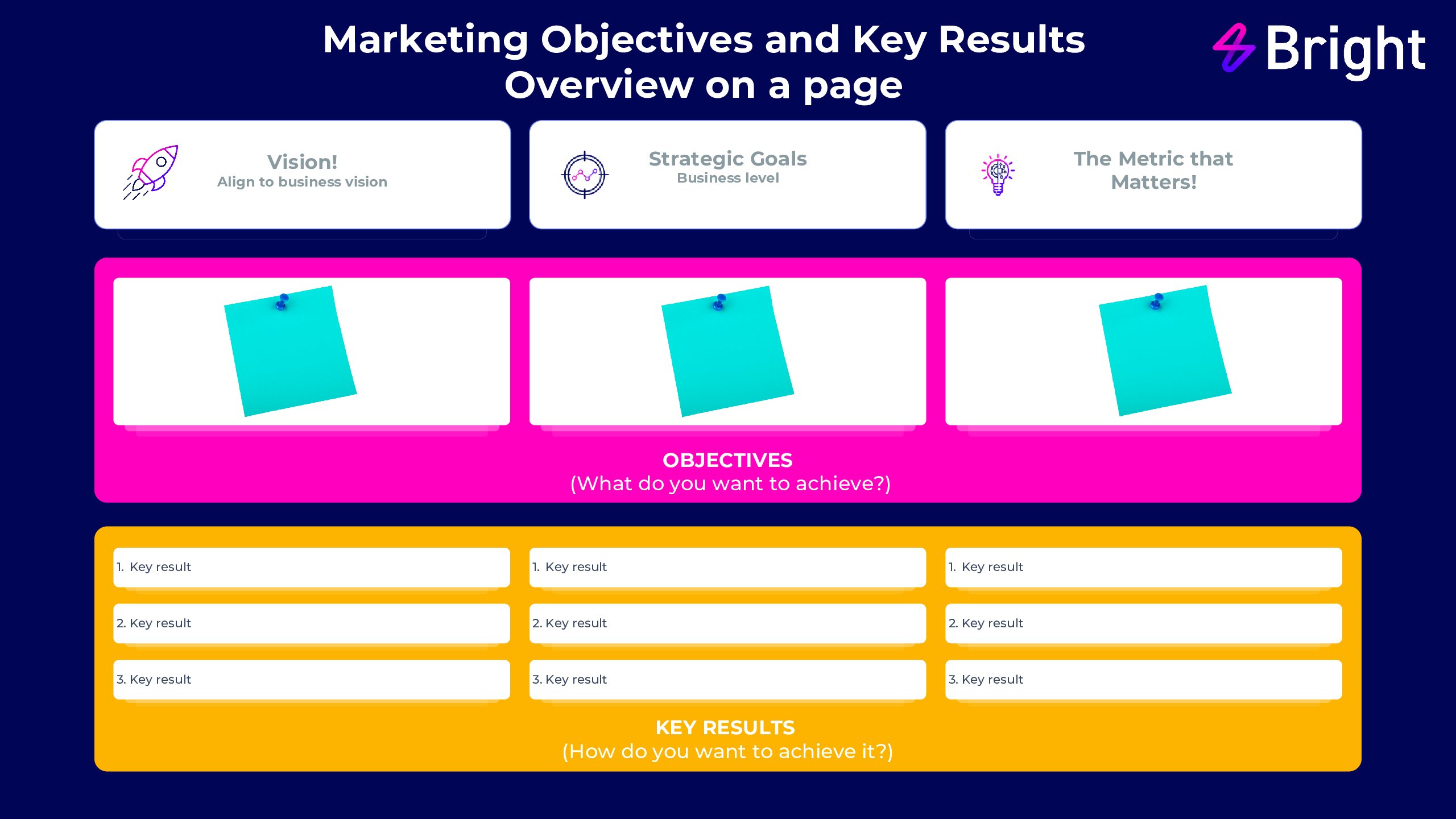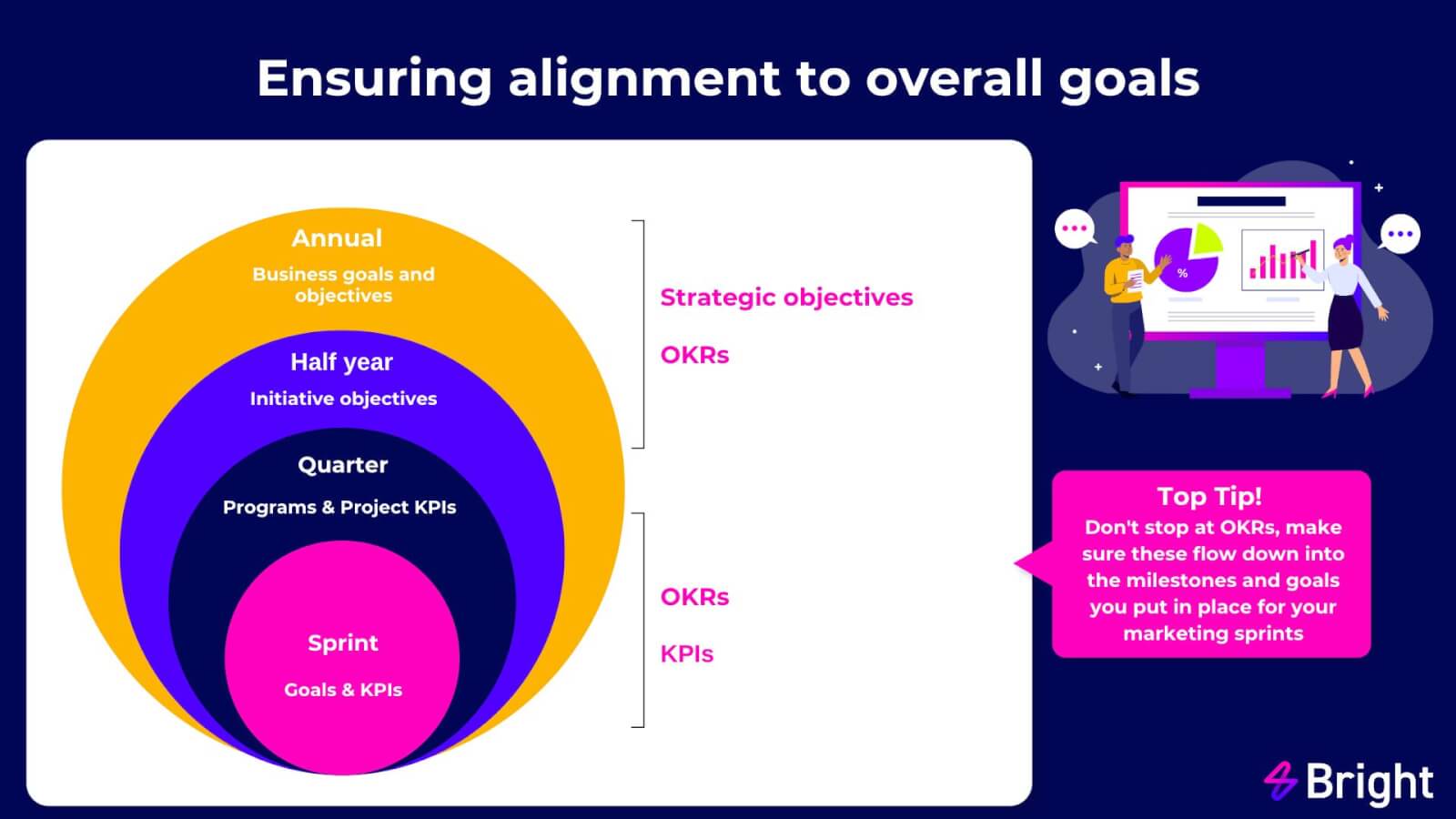Does it feel like you’re working away on marketing activity, without focusing on the overall business goals? You’re not alone.
Without clear and tangible goals, it can be difficult to measure marketing progress, and to ensure it is aligning with what you want your teams to achieve. By implementing a system to regularly check in on clearly defined objectives, you can create a culture focused on measuring results and delivering value. This is where OKRs come in.
What is an OKR?
OKRs have become pretty well adopted across most businesses now, but it’s always worth a reminder… Objectives and key results – or OKR’s – are a great way to define what your individual and teams’ goals are, and what achieving them will look like.
As the name suggests OKRs are broken down into:
Objectives: the business goal you wish to achieve. Your objective should be aspirational, memorable, and qualitative.
Key Results: results we want to achieve on the way to successfully achieving the objective. A general rule of thumb is to have no more than 2-5 key results per objective.
When used effectively, OKRs allow an organisation to:
- Focus and commit to priorities
- Align and connect teamwork
- Be accountable through tracking
- Stretch to achieve ambitious results
Using OKR’s for greater marketing agility
Having well-defined OKRs are a great way to encourage a move away from untargeted, scattered and ad-hoc marketing activity, and towards work aligned with achieving wider business goals.
OKRs can help transform your marketing activities into business value by:
Keeping teams on track – with OKRs set, teams can act more autonomously on their own initiative, with clearly-defined goals. They encourage a “what’s next” mentality which can help drive campaigns & projects forward.
Focusing on results – by adopting OKRs, you’re promoting a results-focused culture. This will have a knock-on effect in terms of your teams’ bandwidth – doing more doesn’t help if there’s no significant impact on the overall goals, meaning the sole focus is on work & tasks that contribute to the right outcomes, rather than quantity.
Prioritising goals – OKRs help with prioritising your marketing backlog, if a user story (or task) won’t assist in achieving your OKRs, it’s not a priority. They can also help you evaluate progress and against clearly defined goals.
Self-organising teams – agreeing on objectives as part of the OKR process allows teams to take initiative, and work towards confirmed goals. This incentivises a leaner, more focused workload, with a lesser chance of teams burning out.
Agile marketing transformation – one of the main obstacles to greater marketing agility is a perceived lack of predictability. With OKRs, you can overcome the unknown, by committing to deliver business results within a set period, such as a quarter. OKRs aren’t about sending a certain number of emails per month for the sake of doing so – they are about working on what delivers the best outcomes and incremental experimenting to discover what works best. Through iteration, you can not only measure progress, but also have the scope to experiment with marketing outputs to achieve results, without using excess time or budget.
Getting started with OKRs
When introducing OKRs, you don’t have to start large – one way to do it is to identify 3-4 key objectives to be achieved across a longer period, such as an entire year. These will be larger objectives and are usually agreed upon at a senior level, such as by the board or leadership team for the business to focus on. Once identified, then marketing needs to decide how they can best contribute and demonstrate outcomes and results to support the business achieving them. The final stage is to break them down within each quarter of the year.
This mixture of a larger, yearly target, alongside smaller quarters can assist in showcasing how objectives in one particular area can contribute to the wider organisation. As well as making it easier for the marketing team to stay focused and work towards larger goals by achieving and calibrating against quarterly targets as well as breaking them down further into shorter sprints.
Setting measurable key results is essential for reaching your objectives. While having an annual measurement may be beneficial, one opportunity a year won’t provide enough insight into whether the work has been successful or not – regular data collection can ensure that goals are being met in real-time across the year!
Questions to ask when setting OKRs
When setting your OKR’s, you should ask yourself some vital questions to ensure they make sense from a business and resource perspective.
OKR setting – questions you should ask
- What does the business want to achieve?
- Who do you want to target, in a given timeframe?
- What milestones are you putting in place to track your goals against your sprint activity?
- What reporting are you using to monitor your work? Consider what is available to measure based on your current tech stack.
- What performance do you want to see across chosen channels?
- Does this data provide insight am I avoiding vanity metrics?
Getting your OKRs right at the start of the process can prove highly beneficial for a campaign, so it’s worthwhile to spend some time thinking about these questions. Well defined and realistic OKRs can have a positive impact on marketing strategy, by promoting learning and reflection.
Performance matters, OKRs give the scope to improve marketing performance
OKRs can have plentiful benefits for your business and teams. They can promote a culture focused on delivering – and measuring – value and help align activity towards achieving business goals. They also act as a safety net to enable timely course correction and demonstrate how marketing is contributing towards achieving the overall business goals. By highlighting areas of underperformance or market opportunities you can adapt and realign your strategy, campaign or project to achieve better marketing outcomes.




